How to Choose Solar Powered Exterior Wall Lights?
Home – Info Center – Blogs –
How to Choose Solar Powered Exterior Wall Lights?

By Michael Zhang || Updated on 26th May 2024
Michael Zhang is a seasoned professional with 15 years of experience in the solar lights industry. Throughout his career, he has been actively involved in product design and developing, gaining valuable expertise and insight into the industry. Known for his dedication and professionalism, Michael has contributed significantly to the growth and success of various solar lights projects. His extensive knowledge and hands-on experience make him a trusted authority in the field, and he continues to innovate and excel in his role.
Every house has walls, so decorating and lighting the walls and the surrounding area is important. Solar wall lights play a significant role in this. So, how can you choose the best solar wall light for your home? This article will help you find the answer.
Table of Contents
Check the Design Style of Your House
First, look at the design style of your house. This way, the style of the light fixtures can match the style of your house, and they won’t look out of place after installation.
Modern Style
Modern interior design focuses on simplicity, freshness, and smoothness. This popular style favors geometric shapes, especially squares, rectangles, circles, and ovals.
Modern design emphasizes quality over quantity, similar to minimalist ideas. This style aims to create clean, continuous lines on smooth surfaces.
Homes with this style often suit solar wall lights that are simple in design with smooth lines. The colors should also be simple and clear, mainly single metallic colors or dominant white and black.

Industrial Style
Houses with an industrial style usually look rough and practical. You might see exposed bricks and metal pipes on the walls, and the floor might be made of concrete.
The overall feel is unpolished but charming. Furniture and decorations might be dark-colored or have a metallic texture to highlight this style’s features.
Homes with this style suit solar wall lights with iron or stainless steel casings. Choose metal materials like iron or stainless steel to match the industrial style. For the color of the lights, go for dark bronze or black to complement the house’s color scheme and add consistency to the space.
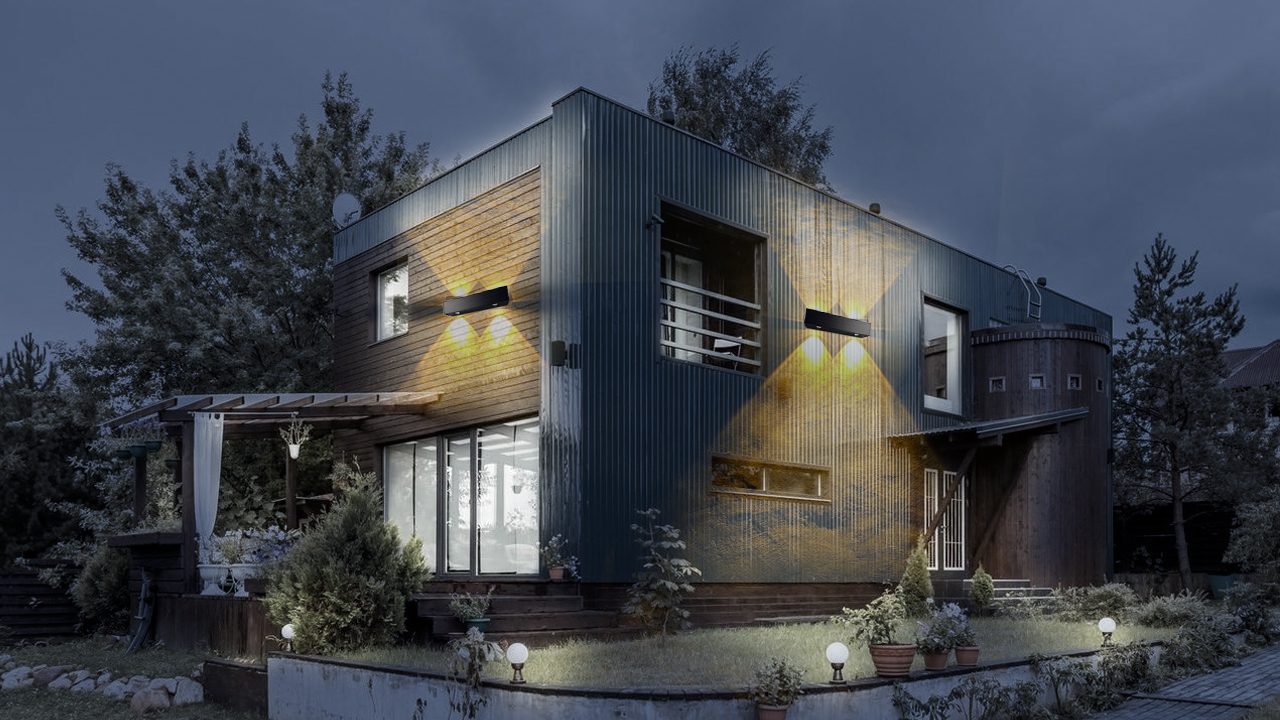
Minimalist Style
Houses with a minimalist design are simple and pared down to the essentials. The walls are often a single color, usually white, with few decorative elements.
Furniture and decorations have simple lines and shapes, focusing more on functionality. These houses might feel spacious because they often use open-plan designs to maximize space, giving a serene and comfortable feeling.
For this style, choose outdoor wall lights with a modern and simple design, like stainless steel fixtures or lights with minimalist glass shades. Select outdoor wall lights in single, unified colors such as black, white, or gray to match the house’s style.

Check the Structure of the House
Additionally, you need to check if the house has eaves. If it does, consider installing split-type solar lights, solar lights with long brackets, or solar lights with adjustable angles. This ensures that the solar panels are fully exposed to sunlight, maximizing their effectiveness.
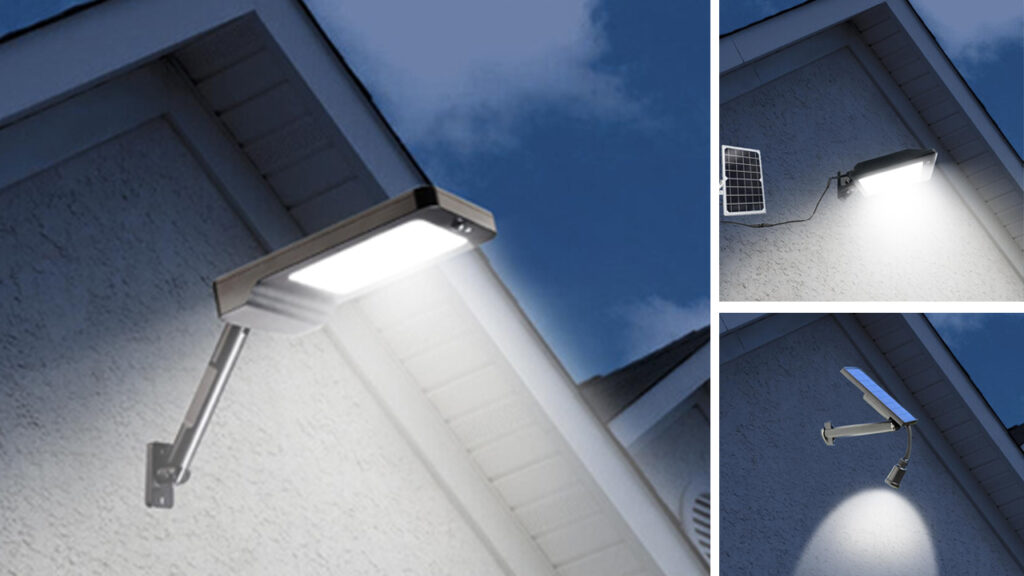
Check the Area to be Illuminated
Next, we need to consider the space around the walls and the size of the area you want to illuminate. Are there pathways or other outdoor areas that need lighting? This will help determine which type of solar light is best suited to your needs.
Small Outdoor Zones
If the outdoor area you want to illuminate is less than 10 square meters, such as highlighting a specific part of an outdoor wall like outdoor stairs, it’s suitable to choose decorative solar lights. Typically, these lights have a luminosity of less than 100 lumens.
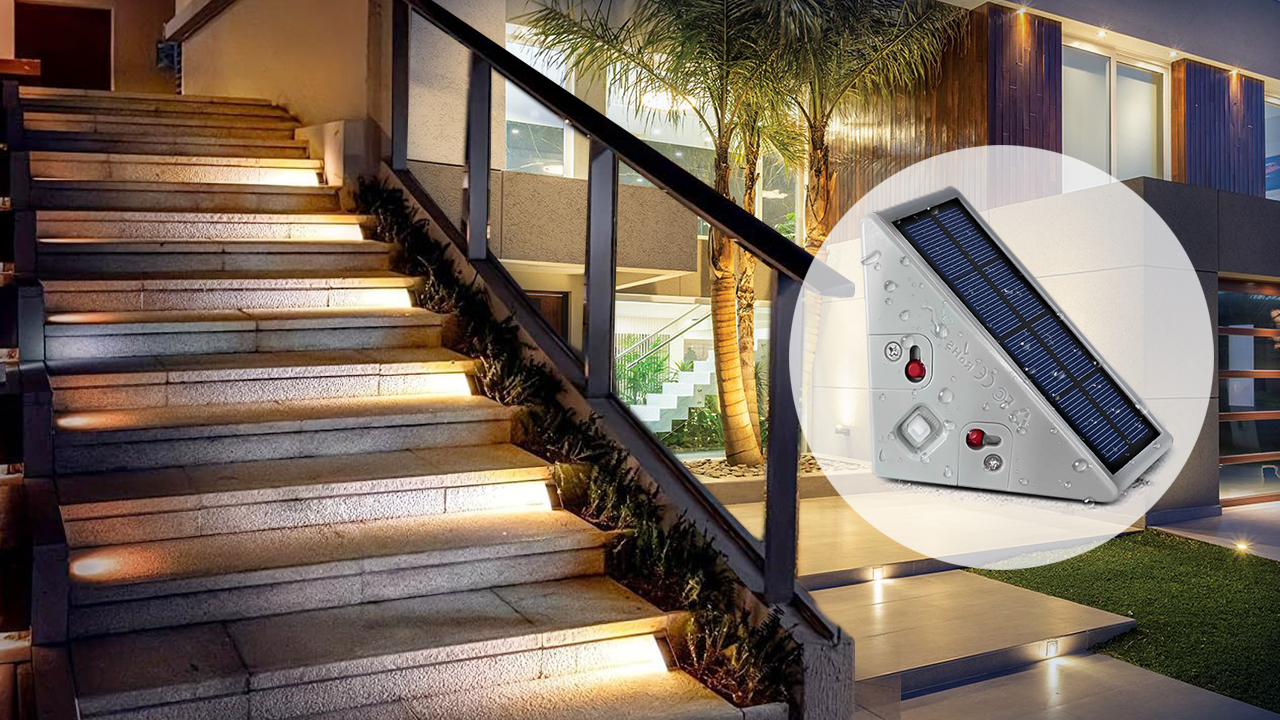
Medium Outdoor Zones
If you want to illuminate an outdoor space between 10 square meters and 50 square meters, you’ll need to carefully select solar wall lights. These lights often require higher brightness, so it’s important to choose ones of good quality while also being reasonably priced.
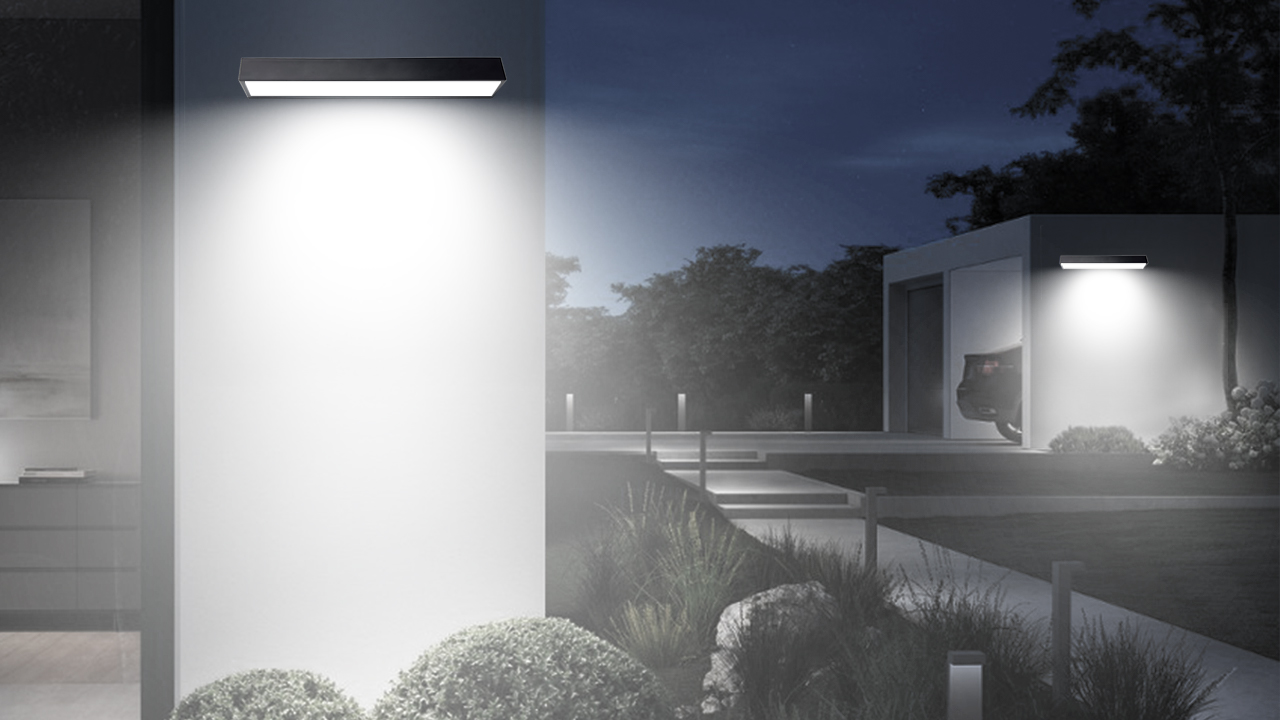
Big Outdoor Zones
If you want to illuminate an outdoor area larger than 50 square meters, it becomes more challenging because conventional residential solar lights may not be suitable. You’ll need to purchase commercial-grade solar lights and pay special attention to the product’s quality assurance and overall lifespan.
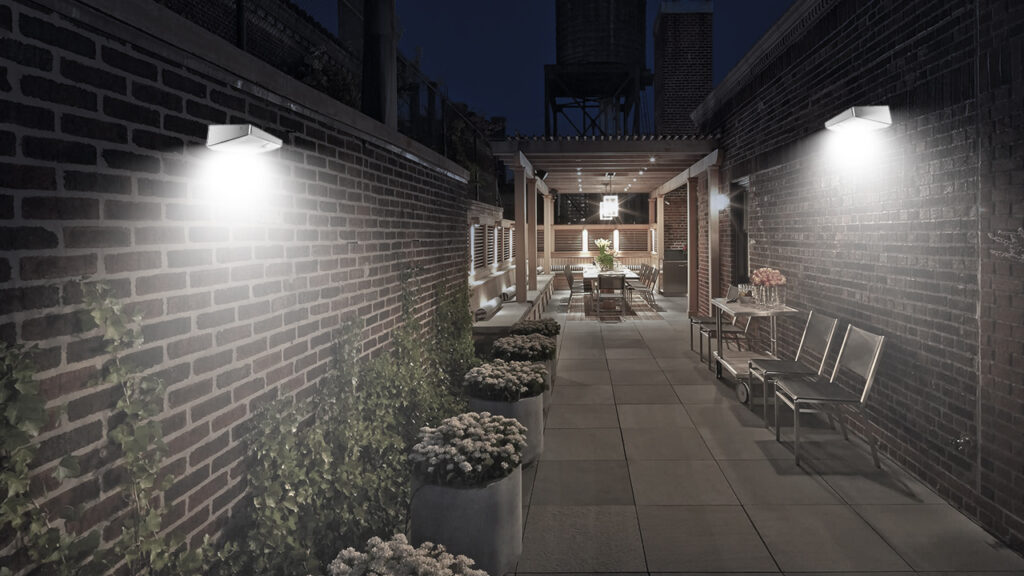
Check the Wall Material
If your walls are made of brick, stone, concrete, or wood, you’ll need to use a power drill and appropriate drill bits to make holes for installing solar lights.
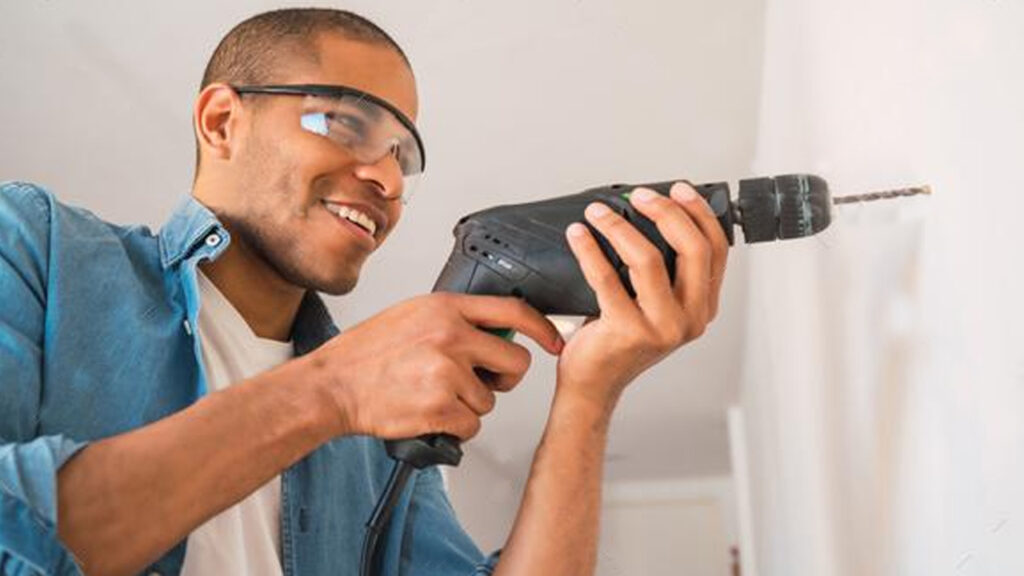
If your walls are metal, you can choose solar lights with magnetic features. This ensures maximum convenience during installation without damaging the wall surface.
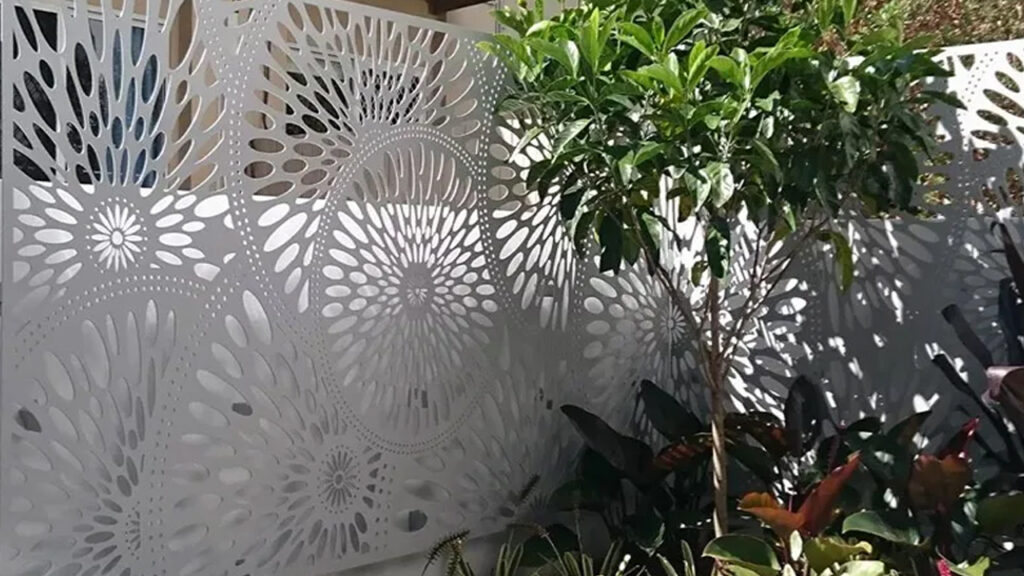
If your walls are made of individual wooden planks, you can choose wall lights with zip ties. This allows you to easily secure the solar lights to the wall surface without much effort.
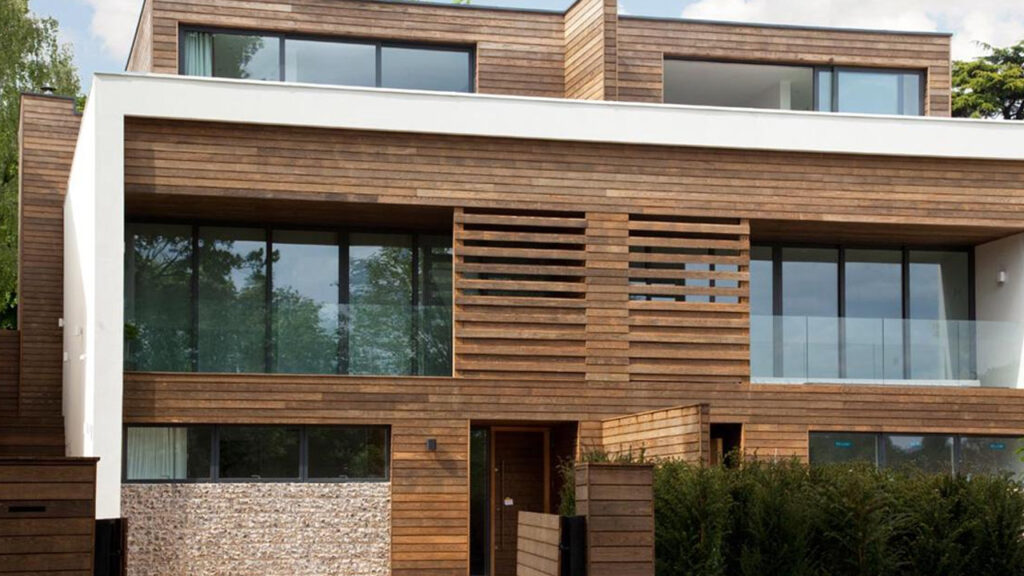
Tips for Choosing Solar Wall Lights
When selecting solar wall lights, it’s crucial to evaluate the condition of your walls and develop the ability to analyze the quality of the lights. This will help us choose the most suitable solar wall lights at the best price.
Checking the Parameters of Solar Panels
The parameters of solar panels can be divided into the type of solar panel, voltage, and current. In terms of the type of solar panel, monocrystalline silicon is the best, followed by polycrystalline silicon, and finally amorphous silicon. When considering the voltage and current of the solar panel, multiplying the voltage and current yields the power, which determines the charging speed of the solar panel.
For more knowledge about solar panels, you can read my article: How Long Do Solar Panels Last?
Checking the Parameters of Batteries
Similarly, the parameters of batteries can be divided into the type of battery, voltage, and capacity. The comprehensive lifespan of lithium iron phosphate batteries is greater than that of lithium batteries. The energy of the battery is determined by multiplying the voltage and capacity, measured in watt-hours (Wh). Energy determines the discharge time of the battery, which is the operating time of solar lights.
For more knowledge about batteries, you can read my article: How Long Do Rechargeable Batteries Last?
Checking the Parameters of LED
The parameters of LED lights typically include efficacy, luminous flux, and color temperature. Efficacy refers to the brightness of the LED under the same power, measured in lumens per watt (LM/W). Luminous flux is measured in lumens (Lumen) and represents the brightness of the light. Color temperature is measured in Kelvin (K) and represents the color of the light emitted by the LED chip.
For more knowledge about LEDs, you can read: Does Lumen Really Work? Or What Is The Kelvin?
Summary
Appropriate solar wall lights not only provide reliable lighting for your outdoor space but also enhance its overall aesthetics and safety. They also contribute to environmental protection. We hope the guidance provided in this article can help you make the best choice during the purchasing process and enjoy the convenience and advantages brought by solar wall lights.
As a company with over 10 years of experience in the development, production, and sales of solar lights, Fligreen continuously strives to understand the market and meet customer needs. If you have any purchasing plans or questions about our products, please contact our sales department!
Related Blogs
February 12, 2025
November 10, 2024
Share Via:
Get in Touch with Us Now!
Got questions or feedback? We’d love to hear from you! Just fill out the form below, and our friendly team will respond ASAP.
